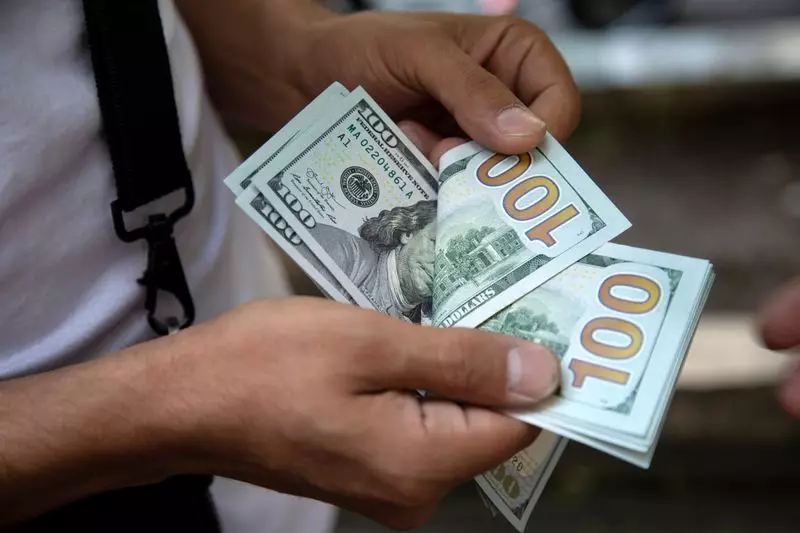The Dynamics of the U.S. Dollar Amid Economic Indicators and Political Uncertainty

The U.S. dollar has shown resilience and strength as October approaches its conclusion. By the dawn of Friday, the Dollar Index rose by 0.1%, reaching 104.025. This upward trajectory comes after a robust performance in September, where the dollar appreciated by over 2%. An essential factor contributing to this strengthening was the latest inflation data released by the U.S. Department of Commerce. The year-over-year increase in the personal consumption expenditures (PCE) index fell to 2.1% in September, a slight decrease from August’s revised figure of 2.3%. Given the Federal Reserve’s target inflation rate is set at 2.0%, these figures are pivotal in shaping expectations regarding monetary policy.
With the anticipated payrolls report for October looming, there is notable anticipation from both economists and traders. Predictions suggest a considerable drop in nonfarm payrolls, estimated to hit 106,000 compared to 254,000 in the prior month. Alongside this, the unemployment rate is expected to remain static at 4.1%. Importantly, average hourly earnings are forecasted to see a month-over-month growth of just 0.3%. It’s crucial to note that these predictions may be influenced by external factors, including the severe hurricanes that recently impacted employment patterns and the ongoing labor disputes in several sectors.
Market analysts are largely convinced that a 25 basis point cut in interest rates by the Federal Reserve is imminent. Currently, futures contracts indicate a staggering 94.7% probability of this outcome. However, experts from ING caution that a significant deviation in the payroll numbers could alter this perception. They predict that any strength from the labor market data may lead to a temporary dampening of dollar prospects, as previous gains are recalibrated.
The political climate approaching the presidential election further complicates matters. As citizens prepare to cast their votes between Republican candidate Donald Trump and Democrat Vice President Kamala Harris, speculation arises regarding how the electoral outcome could affect the dollar. Should Harris secure victory, there may be increased volatility in the markets, leading to a possible depreciation of the dollar as traders unwind their positions.
In the European market, the euro showed signs of weakness, trading 0.2% lower against the dollar at 1.0861. This decline partly reflected the latest inflation data from the eurozone, which exceeded expectations. This update has intensified concerns about the European Central Bank’s potential interest rate maneuvers, especially in light of three rate cuts already implemented this year. Analysts at ING voiced expectations of further depreciation in the euro amidst an anticipated alignment with U.S. monetary policy, which favors the dollar due to a significant interest rate differential.
Conversely, the British pound experienced a slight increase of 0.1% against the dollar, trading at 1.2917. Market participants are carefully observing the ramifications of the recent UK budget introduced by Finance Minister Rachel Reeves, which includes substantial tax increases. Analysts have expressed caution, projecting that while the pound might stabilize temporarily, the longer-term outlook remains uncertain as the market adjusts to increased bond supply and evolving interest rate expectations from the Bank of England.
The USD/JPY exchange also witnessed movement, climbing 0.5% to 152.72. This shift followed the Bank of Japan’s decision to maintain low interest rates. Governor Kazuo Ueda’s remarks indicated a tempered optimism regarding the global economic landscape, particularly concerning the U.S. economy, which, while not entirely free of risks, seems to be stabilizing.
On the Asian front, the USD/CNY currency pair rose by 0.1% to 7.1242. This development came despite optimistic signs from the Chinese manufacturing sector, where the Caixin/S&P Global manufacturing PMI indicated growth for October at 50.3. This figure closely aligns with the official PMI, suggesting a potential rebound in China’s economic activities. However, the overall strength of the yuan remains precarious in light of broader geopolitical tensions and trade dynamics, particularly with the United States.
As we navigate through this complex landscape of economic indicators, political uncertainties, and global monetary policies, the U.S. dollar’s performance reflects a multifaceted interplay of factors. The upcoming jobs report, coupled with impending policy decisions by the Federal Reserve, will undoubtedly play a crucial role in shaping market sentiments and currency valuations in the weeks to come. Market participants must remain vigilant and adaptable as they confront the fluctuating tides of the global economy.





